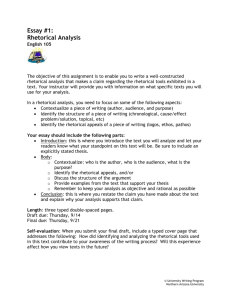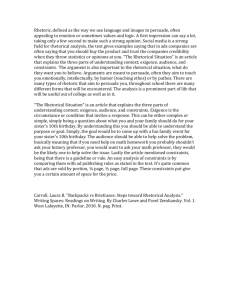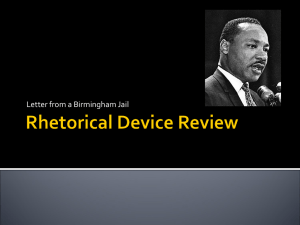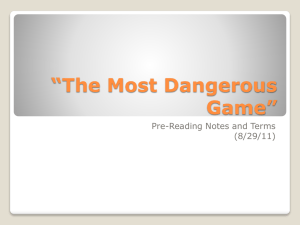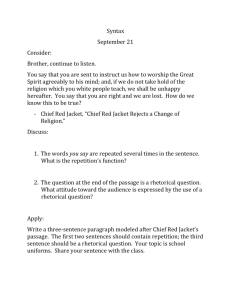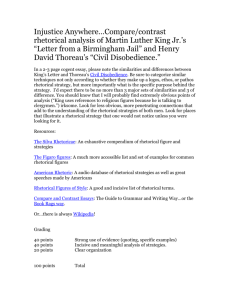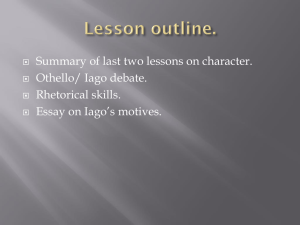Rhetorical Analysis Essay Checklist
advertisement
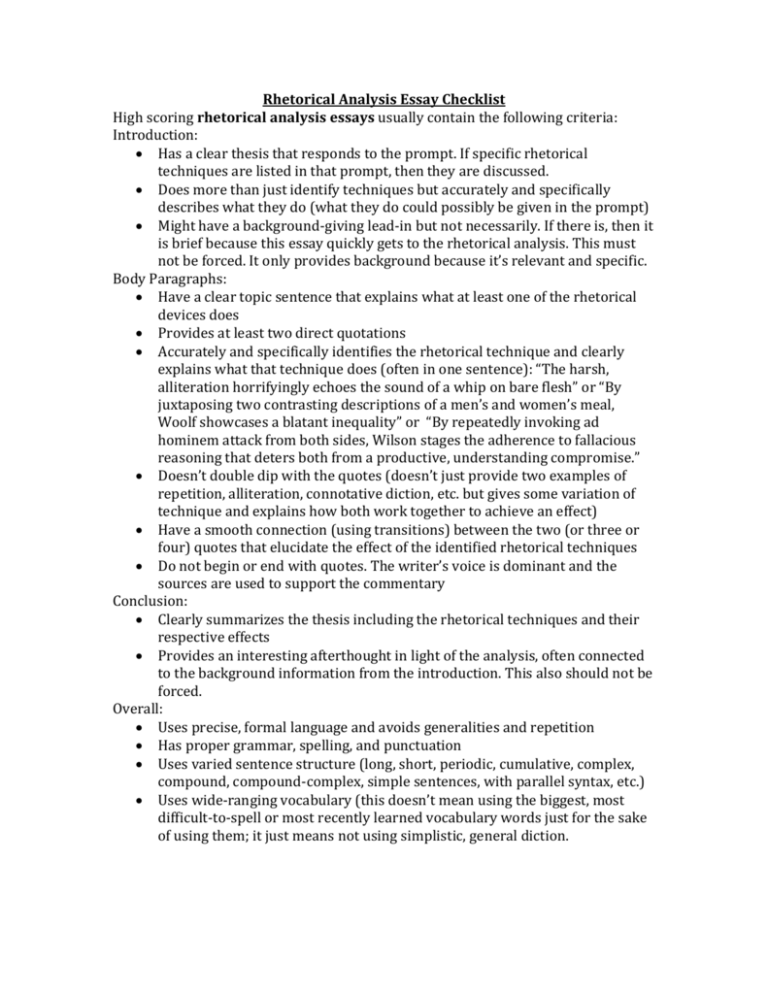
Rhetorical Analysis Essay Checklist High scoring rhetorical analysis essays usually contain the following criteria: Introduction: Has a clear thesis that responds to the prompt. If specific rhetorical techniques are listed in that prompt, then they are discussed. Does more than just identify techniques but accurately and specifically describes what they do (what they do could possibly be given in the prompt) Might have a background-giving lead-in but not necessarily. If there is, then it is brief because this essay quickly gets to the rhetorical analysis. This must not be forced. It only provides background because it’s relevant and specific. Body Paragraphs: Have a clear topic sentence that explains what at least one of the rhetorical devices does Provides at least two direct quotations Accurately and specifically identifies the rhetorical technique and clearly explains what that technique does (often in one sentence): “The harsh, alliteration horrifyingly echoes the sound of a whip on bare flesh” or “By juxtaposing two contrasting descriptions of a men’s and women’s meal, Woolf showcases a blatant inequality” or “By repeatedly invoking ad hominem attack from both sides, Wilson stages the adherence to fallacious reasoning that deters both from a productive, understanding compromise.” Doesn’t double dip with the quotes (doesn’t just provide two examples of repetition, alliteration, connotative diction, etc. but gives some variation of technique and explains how both work together to achieve an effect) Have a smooth connection (using transitions) between the two (or three or four) quotes that elucidate the effect of the identified rhetorical techniques Do not begin or end with quotes. The writer’s voice is dominant and the sources are used to support the commentary Conclusion: Clearly summarizes the thesis including the rhetorical techniques and their respective effects Provides an interesting afterthought in light of the analysis, often connected to the background information from the introduction. This also should not be forced. Overall: Uses precise, formal language and avoids generalities and repetition Has proper grammar, spelling, and punctuation Uses varied sentence structure (long, short, periodic, cumulative, complex, compound, compound-complex, simple sentences, with parallel syntax, etc.) Uses wide-ranging vocabulary (this doesn’t mean using the biggest, most difficult-to-spell or most recently learned vocabulary words just for the sake of using them; it just means not using simplistic, general diction.


